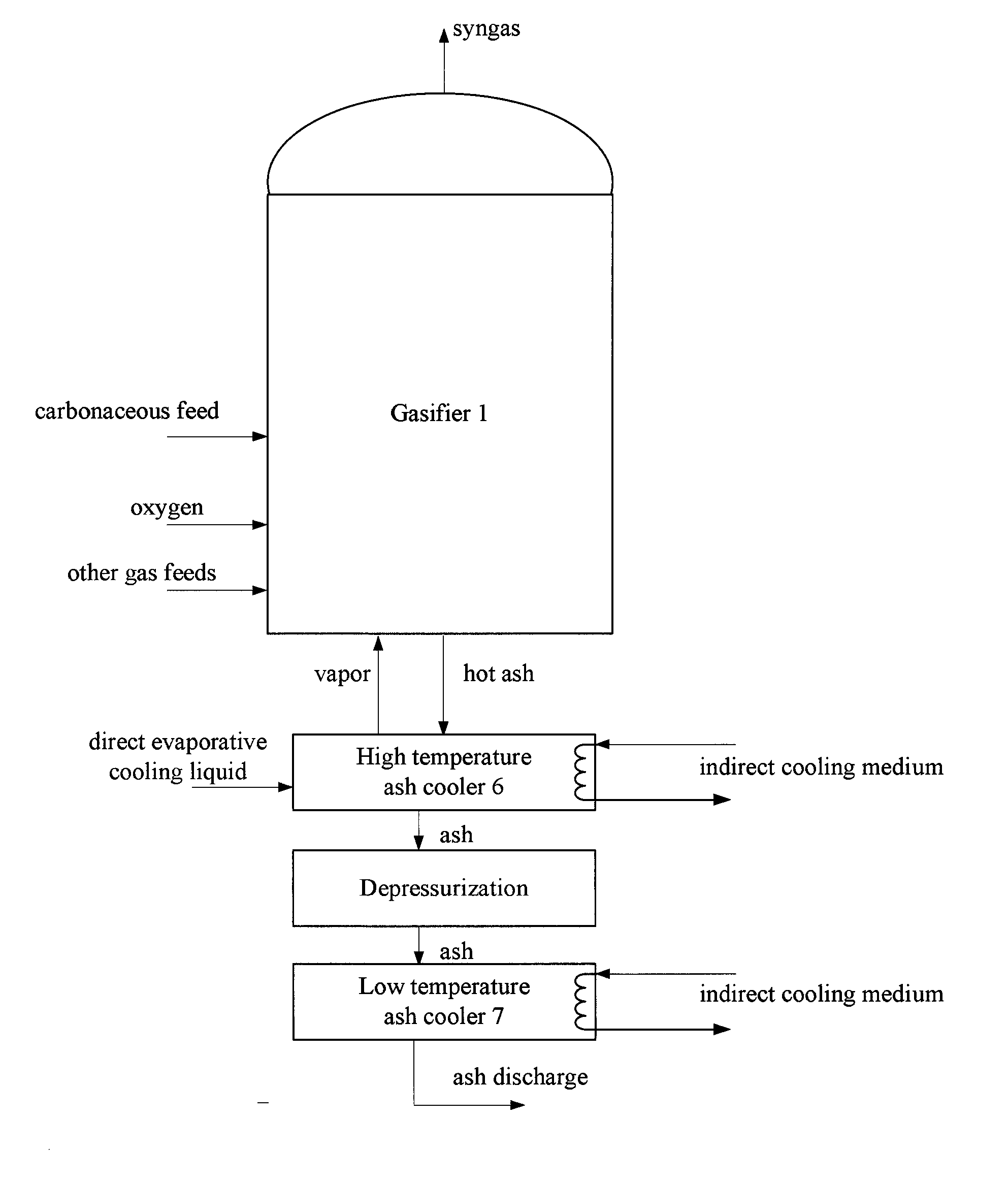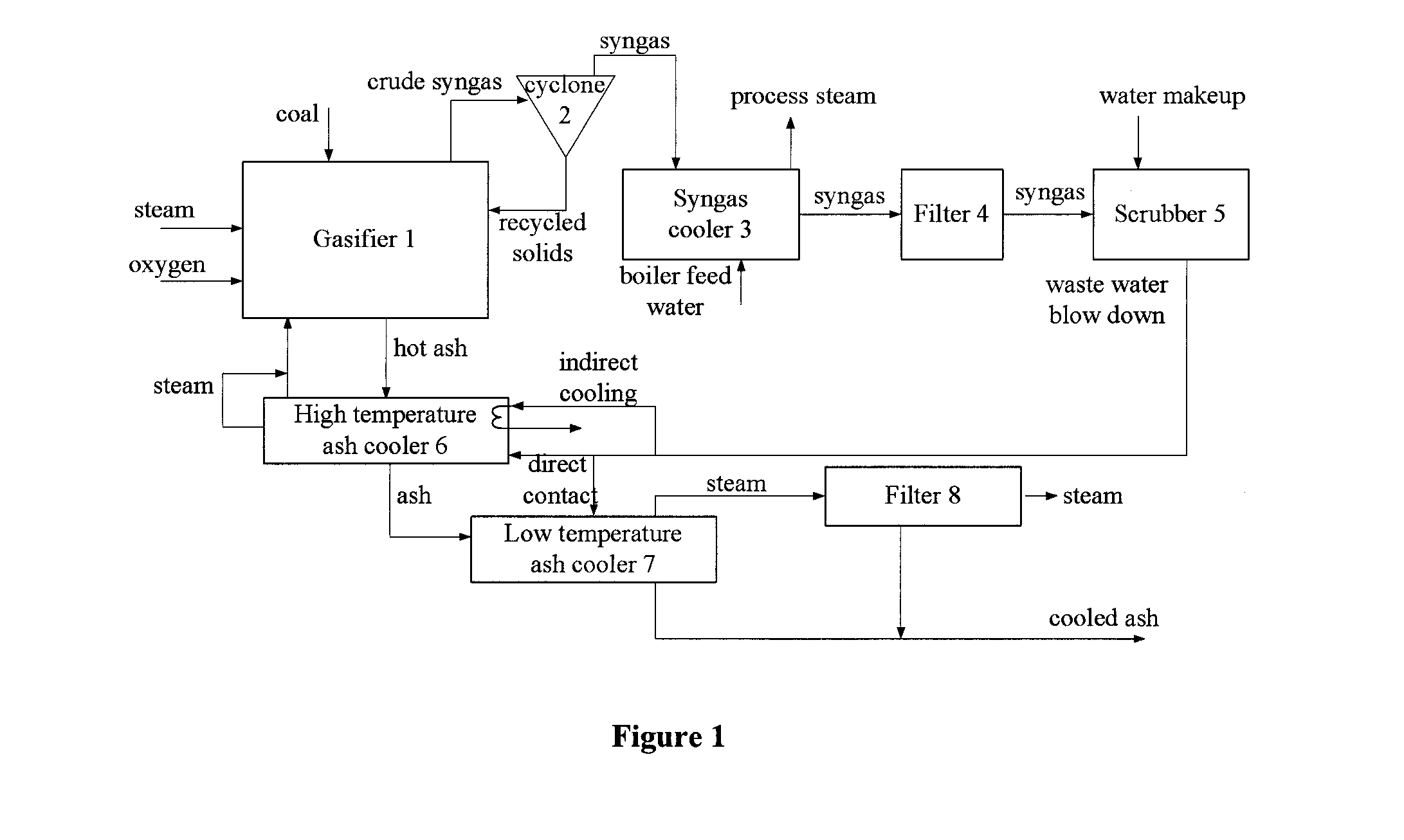Method and apparatus for ash cooling
- Summary
- Abstract
- Description
- Claims
- Application Information
AI Technical Summary
Benefits of technology
Problems solved by technology
Method used
Image
Examples
Embodiment Construction
[0040]A fluidized bed gasifier, as shown in FIG. 3, comprises a vessel housing a headspace 2 above a fluidized bed 1 of the solid material being gasified and a conical perforated gas distribution grid 7 below the bed through which the gasifying medium is introduced at sufficient velocity to fluidize the solid feed material in the gasifier. The gasifying medium (steam and / or oxygen) is introduced into the gasifier from the plenum space 4 through the grid 7 to fluidize and partially oxidize the solid feed stock.
[0041]A passage such as a pipe 6 (“center jet pipe”) in the center region at the bottom of the grid cone introduces oxidant with diluting gas to the bed. Gas velocity of the centre jet pipe 6 is normally greater than the average superficial velocity of gas in the fluidized bed 1. An ash discharge device 5 comprising an annular passage is provided around this center jet pipe 6 for coal ash agglomerated withdrawal and also for provision of additional gas, such as steam, which may...
PUM
 Login to View More
Login to View More Abstract
Description
Claims
Application Information
 Login to View More
Login to View More - R&D
- Intellectual Property
- Life Sciences
- Materials
- Tech Scout
- Unparalleled Data Quality
- Higher Quality Content
- 60% Fewer Hallucinations
Browse by: Latest US Patents, China's latest patents, Technical Efficacy Thesaurus, Application Domain, Technology Topic, Popular Technical Reports.
© 2025 PatSnap. All rights reserved.Legal|Privacy policy|Modern Slavery Act Transparency Statement|Sitemap|About US| Contact US: help@patsnap.com



